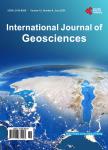Advanced Models Applied for the Elaboration of Landslide-Prone Maps, a Review
Advanced Models Applied for the Elaboration of Landslide-Prone Maps, a Review作者机构:National Institute of Space Research—INPE Sã o José dos Campos Brazil Technological Research Institute—IPT Sã o Paulo Brazil
出 版 物:《International Journal of Geosciences》 (地球科学国际期刊(英文))
年 卷 期:2022年第13卷第3期
页 面:174-198页
学科分类:081803[工学-地质工程] 08[工学] 0818[工学-地质资源与地质工程]
主 题:Disaster Shalstab TRIGRS Sinmap Landslide Susceptibility
摘 要:Landslides are a natural phenomenon that happens all around the world. When happening in urban areas they become a disaster, disrupting the lifestyle of a community or society. Human losses, social impacts, and structural damage are some of the landslide’s effects. The current climate variability shows an increase in extreme weather conditions, either with long periods of drought or heavy and long-term rainfall. In Brazil, landslides are one of the deadliest disasters;they are usually preceded and triggered by heavy rainfall and already have affected more than 4 million people. Moreover, with the population growth, areas with high declivities have been occupied and turned into urban areas. Those people living there are vulnerable to suffering from landslides, losing their homes, and in extreme cases, losing their life. The identification and monitoring of landslide-prone areas are crucial to avoid disasters. Several advanced models, with different approaches, were developed to identify the landslide-prone areas. Aiming to decide the model that provides more satisfactory results, this paper presents a literature review of the applicability and limitations of three advanced models. The three models are Sinmap, Shalstab and TRIGRS. The analysis determined that all three models are adequate for stability management in slope areas. Moreover, TRIGRS results are more accurate than Shalstab, and the Sinmap model provides an over-estimation of landslide-prone areas.



